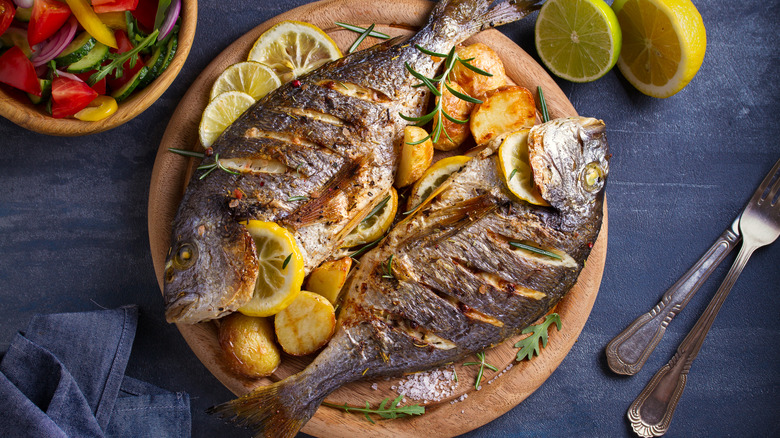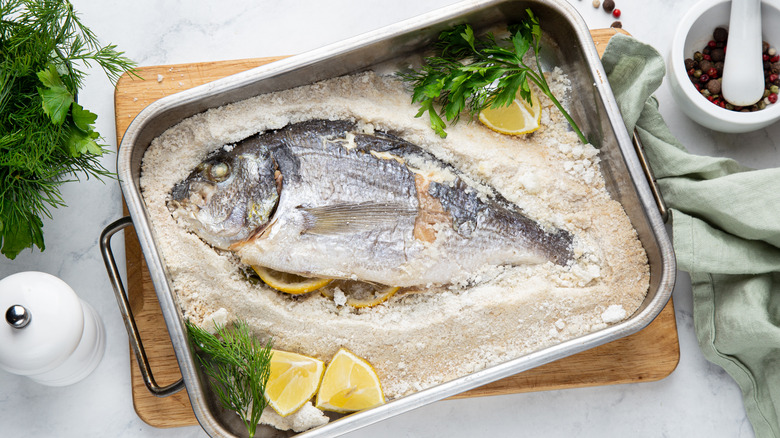This Sicilian Cooking Technique Will Improve The Flavor Of Your Fish
If you're not used to cooking fish at home, the process can be a bit intimidating. Perhaps you don't know how to deal with the bones and scales, or you're worried the delicate filet will fall apart in the pan. There are many different ways to prepare fish, from using a sous vide, to putting it in a smoker. But there's one tried-and-true method that chefs have been using since the fourth century BCE: salt baking.
According to MasterClass, salt baking is said to have originated in Sicily by Greek writer Archestratus. In his recipe, Archestratus outlined a cooking process that included stuffing a whole white round fish with thyme, then coating it in salt, water, and egg white, before baking it and serving it with olive oil.
Not much has changed since Archestratus published the method, and it's likely because it's a great way to impart flavor and preserve the moisture of fish. As What's For Dinner explains, the salt creates a crust that keeps all the steam contained as the fish cooks. This produces evenly cooked fish that gets gradually salted in the process.
How to salt-bake fish
Per MasterClass's instructions, start with a whole fish such as sea bass, red snapper, branzino, or salmon. You'll want to remove the fins, gills, and guts, but keep on the scales. Create a mixture combining egg whites and salt, aiming for a texture that resembles wet sand. According to The Kitchn, the best salt to use is Morton Coarse kosher salt. A more coarse salt stays together better than a fine salt does, and this particular brand firms up to create a cleaner break when you eventually remove the crust. After adding salt, you can also add any seasoning or spice of your choosing, MasterClass says.
At this point, you can stuff your fish with herbs and slices, then coat the entire outside with the wet salt mixture. Before transferring the fish into a baking pan, line said baking pan with a layer of plain salt about a third of an inch thick. Bake in a 350 degree oven until the internal temperature reads 125 degrees, and after a maximum of 10 minutes of resting, remove the crust with a serrated knife and brush off the excess. The resulting fish will be both flavorful and perfectly cooked.

